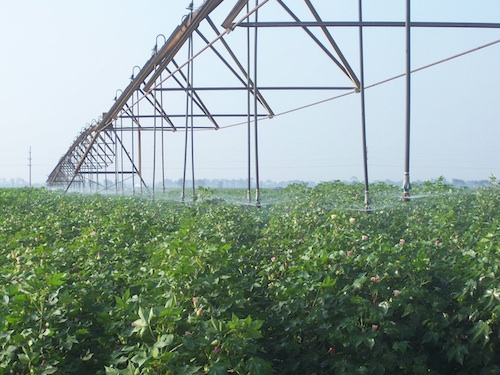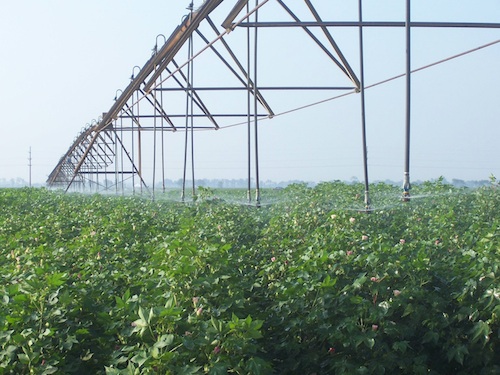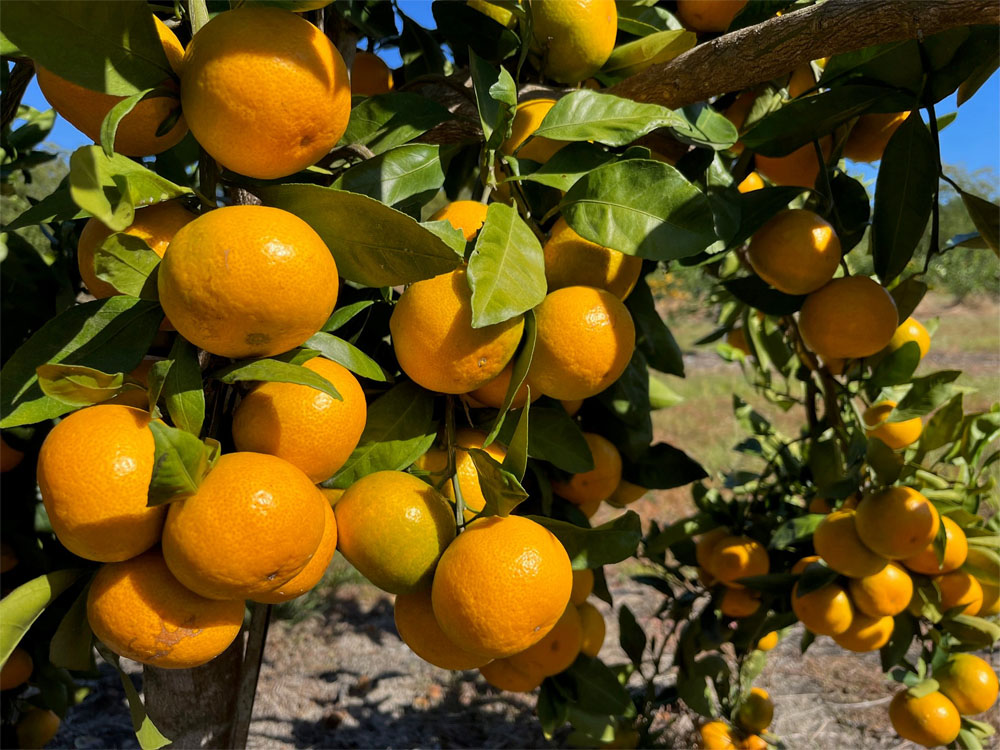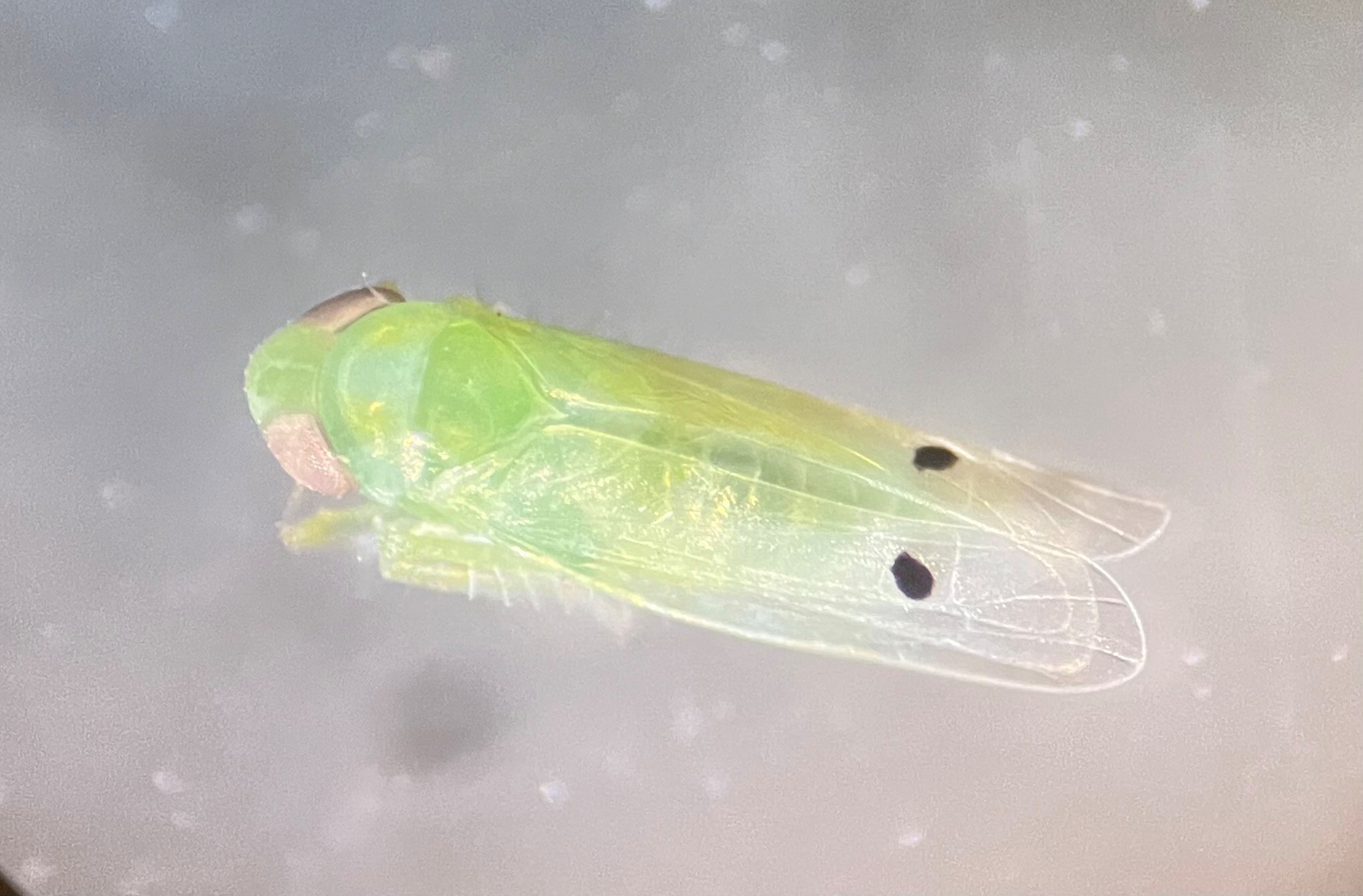A summer drought combined with scorching temperatures have Georgia farmers feeling the heat, says University of Georgia’s agricultural climatologist Pam Knox.
“Now that the temperatures have risen and we’re still not getting rain, it’s really put a lot more stress on the crops,” Knox said. “Looks like there’s not a whole lot of relief in sight anytime soon.”
Parts of Georgia have been classified as D2 — in severe drought — by the Drought Monitor, an organization that tracks the country’s rain deficits. That classification includes Alma in south central Georgia, an area thriving in blueberry production, but one that had endured a record-low amount of rainfall last month. Knox said Alma recorded less than half an inch of rain in July.
Another drought-ridden part of Georgia include areas southwest of Tifton, in which crops have deteriorated rapidly in recent weeks, says Knox.
The summer drought is having a detrimental impact on summer crops. Scott Monfort, a peanut agronomist based on the UGA Tifton Campus, said about half of Georgia’s 590,000 acres are farmed on irrigated land. Farmers with non-irrigated peanuts, however, could feel the pinch once harvest season begins in September if it doesn’t rain soon.
“I think we’ll see our harvest a little under what it has been, not as great as we’ve seen,” Monfort said, referring to 2012-13 when yields were the best the state has ever seen. “It’s just real spotty where we’ve gotten rain. In a couple of locations, we’re telling our growers to watch what they put into it because they might not get it back out.”
Monfort said peanuts will start being harvested around the third week of September and continue as late as Thanksgiving for crops planted the end of May through the first of June.
Georgia cotton farmers expect a productive harvest despite the prolonged drought. UGA Extension cotton agronomist Guy Collins said the USDA is predicting 967 pounds per acre, though Collins believes that number is a little high.
“We’ve got some really good looking cotton and some that’s struggled. Last year, the cotton was so water-logged, it was poor. But this year has been more of a typical year for us so far. There’s always some drought stress at some point in the game so our growers are used to dealing with it,” he said.
Georgia growers planted 1.45 million acres of cotton this year.
The recent heat wave has also taken its toll on vegetable producers who are trying to get their fall crop in the ground, says UGA College of Agricultural and Environmental Sciences vegetable horticulturist Tim Coolong.
“People are trying to get transplants into plastic and get them established. This heat last week has been an issue,” Coolong said. “People are having to run irrigation to wet the beds before planting. They normally do that anyway but they’re having to do it a little more now and then really keep the water on the plants.”
Since most Georgia grown vegetables are heavily irrigated, the lack of rainfall has reduced the potential for some diseases.
Contributing to Georgia’s severe drought is the lack of tropical systems coming up from the Gulf of Mexico.
“This is definitely a below-average season. Up to 30 percent of our rain in the summer comes from tropical systems. When we don’t have those storms come over, we’re more likely to go into a drought,” Knox said.
For more information about drought in the United States, go to droughtmonitor.unl.edu.





